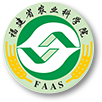Abstract:
Objective Pesticide residues in teas produced at Qiandongnan Prefecture after the implementation of the 2021 Guizhou Province Tea Industry Development Regulations were tested, and food safety risk of the products reassessed.
Method Three hundred tea products produced between 2021 and 2023 by the local vendors were collected for pesticide residue determination using the national standard methods of GB 23200.113—2018, GB 23200.13—2016, and 23200.121—2021. They were also graded for quality by the international standard methods of GB 2763—2019 and GB 2763—2021.
Result Out of the 300 tea samples, 95 were detected with presence of pesticide residues and two exceeded the standard threshold. The overall positive detection rate was 31.67% and a substandard rate of 0.66%. Annually, the proportions of tea products containing pesticide residues declined significantly from 52.94% in 2021 to 37.40% in 2022 and 16.10% in 2023. Only one sample in 2021 as well as 2022, and none in 2023, exceeded the MRL standards. Among the 31 mostly low-to-medium or slightly toxic pesticides detected in the teas, thiamethoxam were found most frequently in 22 samples, dinotefuran in 20 samples, carbendazim in 18 samples, bifenthrin in 17 samples, and buprofezin in 16 samples. Two highly toxic pesticides scarcely found in the samples were carbofuran and methomyl.
Conclusion The quality and safety of the teas produced in Qiandongnan Prefecture were satisfactory by and large and significantly improved after the Guizhou Province Tea Industry Development Regulations was implemented in 2021.




 下载:
下载: